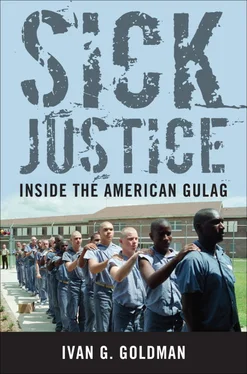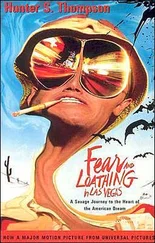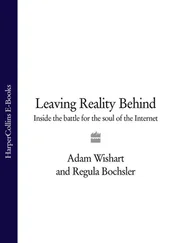I’ve known Martinez, a good-natured neighborhood kid, since he was twelve, but like most of his acquaintances, I never took serious notice of his problems, even though I was aware that his father died young and that the death inflicted awful damage on the family’s finances and Martinez’s upbringing. Shortly before the bicycle incident, Martinez came by the house with my son. I asked if anyone was interested in some leftover pasta we had sitting in the refrigerator. Martinez ended up eating what must have been a half gallon of the stuff. He was half-starved. We need to do something about this, I remember thinking. I knew he’d dropped out of community college to work construction jobs, but by this time the Great Recession was forcing people out of their jobs and homes, and construction contracts were becoming scarce. Although I didn’t know it at the time, Martinez was penniless and had no one to fall back on. He shared a small flat with an ex-girlfriend too kindhearted to kick him out. I had plenty on my mind, and although I’m not proud of it, the next time I heard about Martinez, he was in county jail looking at a possible twenty years. Martinez served his three and a half years for almost stealing a bicycle and upon release was admitted as a charity resident into the Beit T’Shuvah substance abuse program in Los Angeles. The last time I talked to him he was employed as a truck driver for the organization’s two thrift shops. He finished the 2013 Los Angeles Marathon, and his life had taken a more hopeful, productive turn.
“I COULD GO BACK FOREVER”
I’ve spoken with a number of two-strikers now out in the world. Their descriptions of their lives are remarkably similar to Martinez’s. No matter how determined they might be to mend their ways and stay out of prison, they live in mortal fear of police contact, believing that if they’re involved in any sort of fracas, they’ll be blamed because of their record. They try to stay away from places—bars, for example—where trouble is more likely to occur. But ex-convicts, usually at the bottom of the socioeconomic ladder, tend to live in neighborhoods that middle-class citizens drive through with windows up and doors locked. For these ex-cons, it’s virtually impossible to avoid trouble spots. Trouble spots are right outside their front door.
In addition, an opposite, ugly side of the two-strikers’ existence can make some of them extraordinarily dangerous to others. Because they can get a twenty-five-year sentence for a pinch of dope, any confrontation with police is hugely risky. Convicts and ex-convicts know that police officers are sometimes attacked and even killed because the three-strikes decrees make life-and-death situations out of minor infractions. They assume that if an officer of the law has been assaulted and perhaps killed for attempting to make a routine arrest or during an ordinary stop of a pedestrian or vehicle, it’s because some desperate ex-felon feared triggering that third strike and decided, why not just point and shoot?
A 2004 study found that in California, 57 percent of inmates serving twenty-five years to life for a third strike triggered the penalty with a nonviolent offense. 11Once you’ve done time alongside a convict who will die in prison because he was arrested for possession of a dime bag of heroin or shoplifted a pocket calculator, you’ve absorbed a lesson you won’t soon forget.
Can two-strikers move elsewhere to escape the sword of Damocles? Yes and no. In early 2013, a total of twenty-six states had habitual offender statutes. They practice reciprocity.
NINE CASSETTES FOR YOUR LIFE
In 1995 a California court, using the state’s 1994 three-strikes law as its foundation, sentenced Leonardo Andrade, a thirty-seven-year-old heroin addict, to fifty years to life for shoplifting nine videocassettes worth $153.53. 12An army veteran, Andrade had a long string of petty offenses on his record, but none was violent. Opponents of the habitual-offender law saw Andrade’s case as an excellent wrench to throw into the three-strikes machinery, and in 2001 they thought they’d won the argument when an appellate court threw out the sentence as excessive. But two years later, in a decision that essentially upheld thousands of life sentences, the U.S. Supreme Court ruled 5-4 that Andrade’s trial and sentencing had met every legal test.
Justice Anthony Kennedy, a member of the majority, told the annual meeting of the American Bar Association that same year that it’s “a grave mistake to retain a policy just because a court finds it constitutional. Courts may conclude the legislature is permitted to choose long sentences, but that does not mean long sentences are wise or just.” 13So why did Kennedy speak one way and vote another? He’d already freely and frequently expressed his opinion that criminal justice statutes were far too punitive. But though he disapproved of the three-strikes law as written, he decided he couldn’t find anything downright illegal about it. Taking a strict constructionist posture, he decided that California bore the responsibility for amending its bad law. As long as an unwise law was written correctly, Kennedy and other jurists like him would uphold it. To do otherwise would be to legislate from the bench. Kennedy’s position makes sense in the abstract but looks terribly deficient down on the ground, where people are seeking justice. And if sentencing a man to a life term for shoplifting nine videocassettes isn’t the “cruel and unusual punishment” that’s expressly forbidden in the Constitution, then what is?
FACTORY GIRLS
Harsher penalties for repeat offenders weren’t invented with the three-strikes laws. The concept is more than a century old. But previously judges were allowed discretion. It was most unlikely that anyone would be sentenced to life for stealing a pizza slice because that would defy common sense. Aleksandr Solzhenitsyn wrote about impoverished Soviet factory girls who would smuggle out a spool of thread between their breasts. Thousands were caught. The standard sentence was ten years. Many were worked and starved to death before they could complete their terms. The history of humankind teems with forgotten souls like these factory girls. But the United States, founded on higher ideals, was supposed to rise above such barbarities.
When California voters approved the Three Strikes and You’re Out initiative with a whopping 72 percent of the vote, they assumed it was the same law as its Washington state predecessor, passed a year earlier. When the idea was originally suggested, backers in California talked only about violent offenses. But the substance of the proposal was changed, and not everyone received the news. California was the place where three strikes met Frankenstein’s monster. He came in the form of an ex-con named Joe Davis. 14
THE LAST STRAWS
Davis, a twenty-five-year-old habitual criminal and crystal meth addict, was with his partner, Douglas Walker, on a stolen motorbike in June 1992 when they pulled up to Kimber Reynolds in Fresno. Reynolds, eighteen, was leaving a stylish restaurant with a friend and about to get into her car, which was parked directly in front of the restaurant on a busy street. A student at the Los Angeles Fashion Institute of Design and Merchandising, Reynolds had come back to her home-town for another friend’s wedding. Davis, who’d been paroled two months earlier from Wasco State Prison where he’d served time for auto theft, tugged at Reynolds’s purse. Reynolds tugged back, and in full view of about twenty witnesses, Davis brought a .357 magnum pistol up to her ear and fired, mortally wounding her. The next day a Fresno special weapons and tactics (SWAT) team cornered Davis in his girlfriend’s apartment, and when he tried to shoot his way out, they killed him.
Читать дальше












